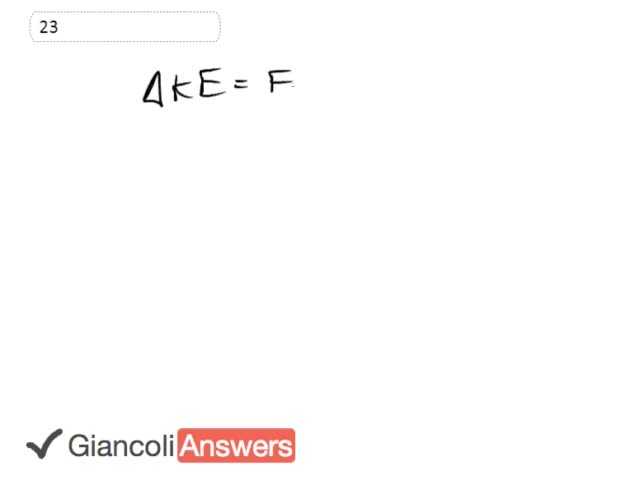

In order to watch this solution you need to have a subscription.
We know that the change in kinetic energy of this softball is going to be equal to the net work done and that work is the net force times distance over which the force is acting. In this scenario the net force is friction, the air friction that we want to calculate. We’re ignoring gravity and things like that. So we have that the change in kinetic energy is one half mass times the final velocity minus one half mass times the initial velocity and we’re told that it slows by 10%. So factoring out the one half ‘m’ we say that the final velocity is 90% of the initial velocity. So .9 times ‘vi’, that squared minus ‘vi’ squared. So I factored out the one half m and then substituted for ‘vf’ and said that’s it’s .9 times ‘vi’ because it’s 10% less. Okay. And well, we can even factor out the ‘vi’ squared and we get ‘mvi’ squared over two times 0.9 squared minus one. Then solving for the friction force in… up here; if we substitute friction force here then solve for it we can see that it’s going to be the kinetic energy divided by ‘d’. So the friction force is changing kinetic energy divided by ‘d’. Well, this is the change in kinetic energy. So we’ll take that and divide it by ‘d’. So we have mass times initial velocity squared times .9 squared minus one all over two ‘d’. Substituting in numbers we get .25 kilograms times 95 kilometers per hour. Have to change that to meters per second times 1,000 meters for every kilometer times one hour for every 3,600 seconds or divide by 3.6 in other words and then times that by .9 squared minus one. And all this gets divided by two times the 15 meter distance between the pitcher’s mound and the plate. So the answer to this is ANSWER Newton’s I going to say negative because we know that this friction force is going to be opposing it’s direction of motion.